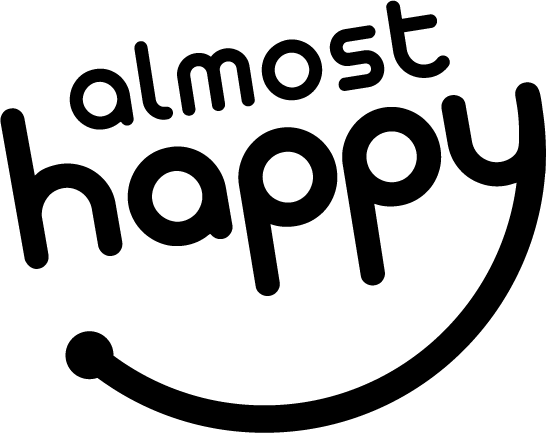The clinical application of reverse psychology as a legitimate additional approach in psychotherapy is discussed. In this author’s opinion, the zeitgeist cries out for a humane and effective psychotherapeutic system that produces results that are durable. Ideally it should be neither psychologically-draining nor time consuming for the psychiatrists, psychotherapists, GPs and other mental health professionals who train in it and integrate it into their practices. Instead, it should be energising and life affirming for both patient and practitioner. I’m not describing a pipe dream here; such a system exists and it is called Provocative Therapy.
Provocative Therapy is the cutting edge of the clinical application of reverse psychology in psychotherapy. Until now, Provocative Therapy has been marginalised and only practised by a limited group of psychotherapists, but I am utterly convinced that it can make a particularly significant contribution to the disciplines of psychiatry, psychotherapy and counselling. It requires a certain amount of professional training and supervision but it lends itself to being seamlessly integrated into the existing practices of most mental health practitioners. The story of its evolution began more than three decades ago.
Frank Farrelly, a psychiatric social worker at Mendota State Institute in Wisconsin in the 60’s and 70’s, was conducting his 92nd interview with an in-patient suffering from refractory chronic schizophrenia. Until this consultation he had been using classical Rogerian client-centred therapy - unfortunately with little impact. The patient continued to bemoan the hopelessness of his situation and the impossibility of ever improving.
For no specific reason that he can remember, Farrelly abandoned the rules of client-centred therapy and spontaneously used reverse psychology by saying ‘Okay, I agree with you, there is no solution to your problem.’ The patient suddenly became animated and began to protest vociferously against this ‘prognosis’, but in doing so he had unwittingly begun to prescribe effective treatment for himself by insisting that there must be a solution to his problem! Incredibly, after six weeks more of Farrelly using this contrarian approach, telling him that nothing could be done for him and that he should relax and accept his inability to change anything, he improved dramatically and was discharged from Mendota State Institute. His schizophrenia remained well controlled and he was never admitted again. As an amazed Farrelly moved from one success to another, reverse psychology, a useful psychotechnology familiar to almost every parent, began to establish its place in clinical medicine. Farrelly went on to co-author Provocative Therapy in 1973.1 Adding to this provocative tool, which he later termed 'There is no solution to your problem', he went on to add 'What’s wrong with that?'; 'Play the Blame Game'; 'Do more of the same' and many other strategies (based on subtle reverse psychology) all of which provoke patients to take responsibility for their lives.
One of Farrelly’s major contributions to psychotherapy is immediately to transfer the agency of responsibility from practitioner to patient. Most forms of psychotherapy aim to do this over time, but in Provocative Therapy this process is expedited by the use of reverse psychology which also enables the use of humour by virtue of its seeming absurdity. By playing Devil’s Advocate, in order to reflect back the pattern of dysfunctional behaviour to the patient in absurdly exaggerated fashion, both patient and therapist frequently end up laughing about the problem. This not only increases the possibility of rapport between patient and therapist but also creates the important goal of highly conscious problem ownership.
Is it just possible that most of us dislike or even resent being advised or told by authorities what we should do with our lives? Of course there are clinical scenarios (such as appendicitis or a cervical spine injury) where we all not only require, but highly appreciate expert authoritarian advice. Unfortunately, this is hardly ever the case in the arena of behavioural problems and psychological issues where authoritarian advice or instruction - even if it is obviously correct and well-intended - is inevitably perceived as being condescending and inappropriately prescriptive. I contend that even if it is only implied indirectly that the therapist knows what the patient should do, or he or she is using a system (such as Freudianism) that purports to make a science out of the human condition, the patient senses this and consciously or unconsciously resents its imposition on his or her situation. Paradoxically, most people also resent being directly coerced in regard to their behaviour. ‘Don’t smoke, don’t drink, don’t gamble – otherwise x, y and z will happen to you’. These titbits of condescending and patronising advice amount to little more than vapid bromides which frequently achieve very little. The current societal problems of alcoholism, drug abuse, obesity and violent crime attest to the truth of this.
If we are told, however, that regrettably there is no solution to our problem, or encouraged to blame others (especially our parents) for our problems, or have the ‘hidden benefits’ of our issues humorously and kindly identified for us, we tend to dig deep within ourselves for the true solution to our problems. The vast majority of people are aware of what must be done to get out of dysfunctional routines, but an effective catalyst is needed to get them started on actually climbing out of the hole that is their particular problem. As I have said, obvious advice isn’t very effective at doing this. The difference in clinical outcome between being advised, coached or even hypnotised what to do and being therapeutically provoked to prescribe our own solution to our problems, is remarkable. Because most patients actually know the solution to many of their problems, the challenge lies in provoking them consciously to own both the responsibility for and the solution to their problems. The approach is to indulge in a version of game theory. If ‘encouraged’ to continue with their destructive ways (and Provocative Therapy has many tools designed to achieve this end), they face a choice: Ignore what is being said and continue to perpetuate the behaviour for which they are seeking help, or self-prescribe a solution they can own.
The task of the provocative therapist is to play the Devil’s Advocate in deftly pointing out to patients the many and varied reasons for maintaining their self-sabotaging behavioural patterns. In response to this contrarian approach, patients tend reflexively to resort to articulating a viable and realistic solution to their problems. Auto-articulation of the solution exponentially increases the chances of that solution being enacted in the patient’s life. Indeed this is what I see in the majority of my patients. It is important to note that it is always the behaviour and not the person that is being assailed or satirised. The therapist argues for the problem, and thus mirrors it in a seemingly absurd way. This results in an exceptionally rapid transference of responsibility from practitioner to patient. I have called this process mirrored pattern interruption.
Of course, patients should never be 'ambushed’ and treated with this approach without their explicit consent and understanding of what Provocative Therapy entails. Even patients specifically requesting Provocative Therapy should be screened for organic causes of psychological problems (e.g. thyroid and neurological pathologies) and general suitability for this methodology. All patients embarking on even one session of Provocative Therapy need to understand that not everything the provocative therapist says can be taken at face value and that they are giving the therapist permission to make comments that might seem ridiculous, absurd, playful, falsely reassuring and seemingly insulting – all in the name of provoking them to come up with the solution to their problems.
What then is the goal of any session of Provocative Therapy? Far from the less than optimistic Freudian goal of ‘transforming hysterical misery into common unhappiness’2, it seeks to provoke patients to come up with their own creative solutions to their problems. But, what then is the underlying philosophy on which this innovative psycho-technology is based? Farrelly briefly states two central hypotheses of Provocative Therapy: Quoting from Farrelly directly: The first hypothesis addresses itself to the client’s attitudes towards himself, his self-concept: If provoked by the therapist (humorously, perceptively, and within the client’s own internal frame of reference), the client will tend to move in the opposite direction from the therapist’s definition of the client as a person.
The second hypothesis focuses on the client’s overt behaviours: If provoked (humorously and perceptively) by the therapist to continue his self-defeating, deviant behaviours, the client will tend to engage in self- and other-enhancing behaviors which more closely approximate the societal norm.3
These hypotheses, axiomatic to the core of Provocative Therapy, strongly differentiate it from other types of therapy aiming to modify human behaviour, such as the group of therapies commonly grouped under the umbrella term of Cognitive Behavioural Therapy (CBT). Provocative Therapy is similar in its ethos to the positive existentialism of Karl Jaspers4 and Eric Ledermann5 (both of whom were medical doctors as well as philosophers) in that it produces in patients highly personal and useful existential guilt which usually catalyses them to instigate meaningful change in their lives. Axiomatic to the existential psychotherapy of psychiatrist, Eric Ledermann, (who was my mentor for several decades) was that every human being (including many psychotic people) has a conscience. The object of psychotherapy therefore is to make the unconscious conscience of the patient, conscious. Ledermann used reverie, the creation of images (the essence of art therapy) and the psychiatrist/patient relationship to help the patient locate and then articulate his or her conscience.6
I practised in this way for many years, but after encountering Farrelly and Provocative Therapy, found that in the clinic, reverse psychology and the humour it engenders were by far the most effective tools to catalyse the patient indirectly to articulate the real solution to the problem. This to me is somewhat equivalent to Ledermann’s making the unconscious conscience, conscious. Patients trapped or limited by their struggles with psychological issues can be compared to people who have fallen into holes and can’t get out. I think that many forms of psychotherapy focus disproportionately on the study of holes and why people fall into them rather than on ways of stimulating their patients to make successful plans for getting out of their particular holes and moving on with more satisfying lives.
Provocative Therapy has been compared to the martial arts in that it uses the force of patients’ problems, reflected back at them, to induce immediate articulation and ownership of appropriate solutions to those problems. As one reflects upon the simple and effective dynamic of this paradigm, it becomes increasingly obvious that practical solutions to most of our problems really are more forthcoming than popularly believed. Provocative Therapy is a powerful therapeutic approach and must be used responsibly and always with positive therapeutic goals. There is arguably nothing to lose by adding this refreshing technique to the mainstream armamentarium of psychotherapeutic tools. It is often a thoroughly enjoyable and rewarding clinical experience to witness the self-eviction of the many demons, which despite their seemingly trivial nature, have the potential to wreck the quality of so many lives.
Dr. Brian Kaplan MBBCh
2016
- Farrelly, F. & Brandsma, J. (1974). Provocative Therapy. Capitola, California: Meta Publications.
- Freud, S. & Breuer J.(1955). The standard edition of the complete psychological works of Sigmund Freud: Studies on hysteria. London: Hogarth.
- Farrelly, F. & Brandsma J.. Op Cit:52
- Jaspers, K.(1955). Reason and existenz: New York: Noonday Press.
- Ledermann, E.(1986). Philosophy and medicine: Aldershot, England: Gower.
- Ledermann, E.(1984). Mental health and human conscience: The true and false self (2nd ed.). Amersham, England: Avebury.


